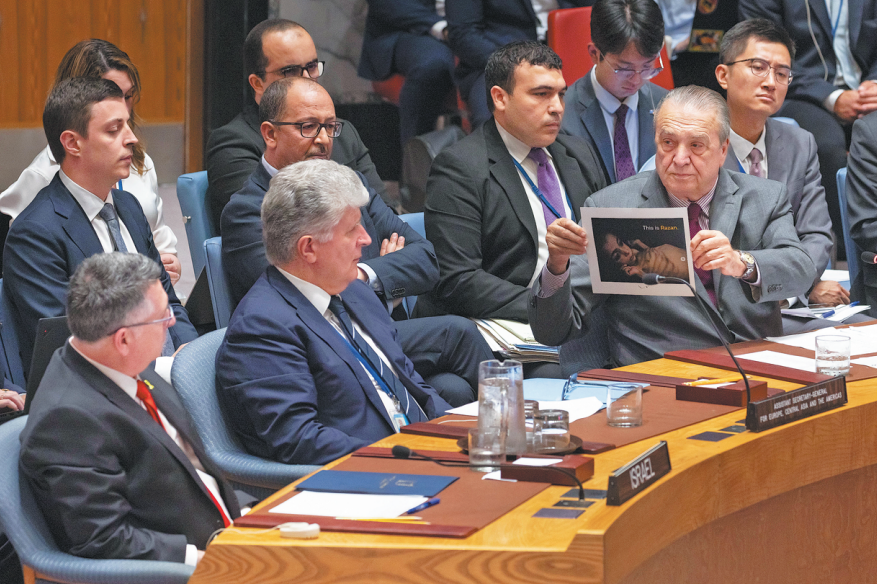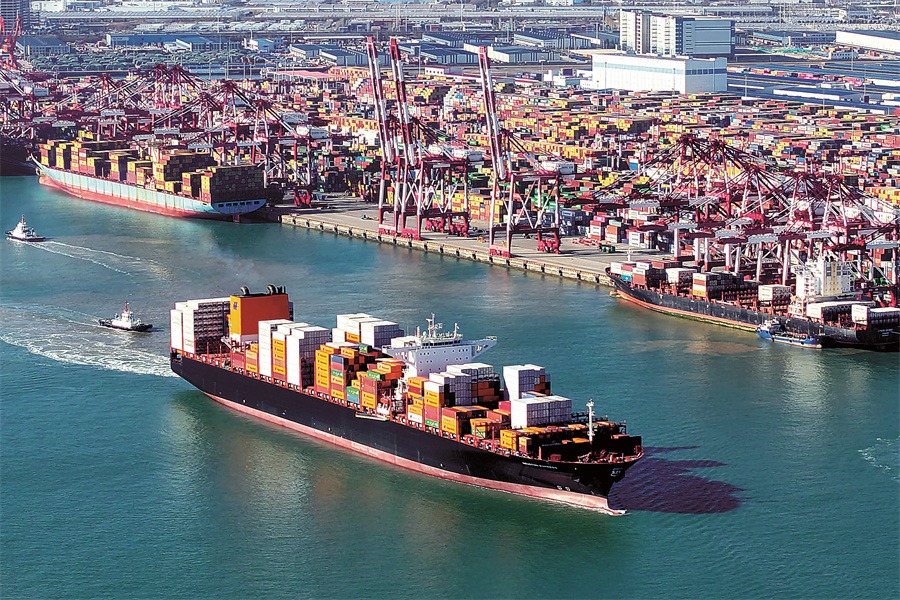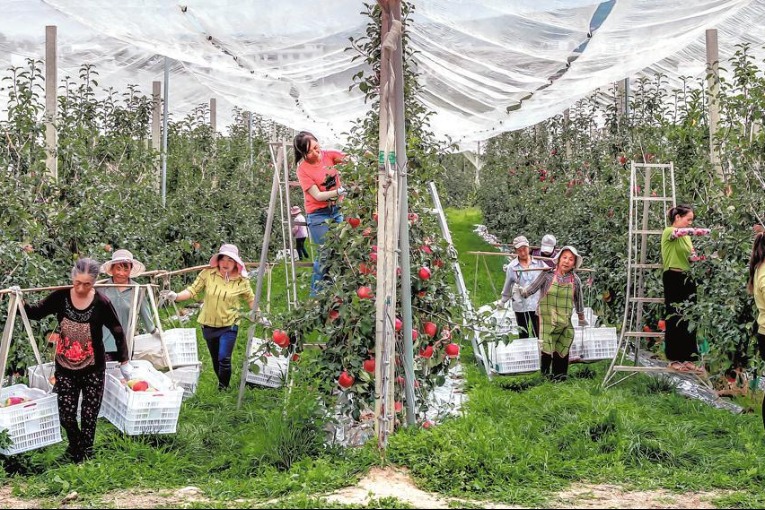Impedance reducer


Consensus rebuilding on cooperation within a managed security framework is necessary to fully reap the benefits of new technology
Amid profound transformations in the global political and economic order, advanced technologies have emerged as a central arena for both strategic competition and international collaboration. Breakthrough innovations — from artificial intelligence to biotechnology — now serve dual roles: they are engines of industrial transformation and economic progress, while simultaneously being treated as vital instruments of national security and geopolitical leverage.
In recent years, technology-leading nations and regions have increasingly tightened controls over critical technologies and supply chains, posing dual challenges to the global sci-tech system, namely de-globalization and re-localization.
Yet the economic value of new technologies extends far beyond their initial invention — it hinges on their rapid and widespread diffusion into real-world production and applications. Overly restrictive policies risk fragmenting the global innovation ecosystem, as the transformative potential of technological breakthroughs can only be fully realized and translated into lasting productivity gains and economic growth through large-scale adoption.
The global high-tech sector must transcend the current impasse of over-securitization and recommit to consensus-driven pathways. Preserving vital international cooperation within a framework of managed security now stands as the defining challenge of technology governance — with profound implications for a worldwide economic revival, the preservation of institutional credibility and the sustaining of lasting peace.
Nations are increasingly wary of security risks in high-tech cooperation, as the logic of national security has permeated many facets of high-tech trade and collaboration. This has left the global technological cooperation network — originally built on the principles of efficiency and market logic — in a state of fragmentation.
First, the international innovation system is trending toward closure. The World Intellectual Property Organization's Patent Cooperation Treaty Yearly Review 2024 showed that the share of global PCT applications involving foreign co-applicants remained generally low in 2023.
Overall, from 2009 to 2023, among the world's top 20 countries in foreign co-applicant patent filings, 11 experienced a notable decline in their collaboration ratios.
International technological cooperation remains primarily concentrated in advanced economies in Europe and North America, yet eight of these countries have seen significant drops in their foreign co-applicant shares.
Specifically, among countries where the cooperation ratio still exceeded 2 percent in 2023, Finland saw a decline of 9.3 percentage points, Canada 9.6 points, France 2.8 points, Israel and the United Kingdom 2.3 points each, and Denmark a slight decline of 0.2 points.
Traditional technological powerhouses such as Germany and Japan remained roughly at the same level as in 2009. Meanwhile, major Asian economies reported consistently low levels of international cooperation, all below 2 percent in 2023, with China declining by 0.9 percentage points and India by 5 points.
While certain countries maintained relatively high levels of cross-border joint patent filings in 2023 — including the Netherlands (11.4 percent), Singapore (9.4 percent) and Switzerland (7.6 percent) — most other key patent-originating nations exhibited low external collaboration rates that also trended downward from 2009 levels.
Against the backdrop of excessive securitization, global patent cooperation is undergoing contractions, with declining enthusiasm for international technological cooperation. Countries are increasingly favoring localized and controllable R&D strategies.
Notably, traditionally active participants in global cooperation — including Canada, Finland, Israel and the United Kingdom — have shown marked declines. Specifically, Canada and Finland recorded significant drops of 9.3 and 9.6 percentage points respectively compared to 2009.
Second, export controls in high-tech sectors have proliferated globally. Such controls have evolved from crisis-era emergency measures into a permanent policy instrument for nations worldwide, with a rising number of civilian high-tech products now subjected to export approval requirements. Semiconductor trade restrictions are a telling illustration of this trend.
Data from the Global Trade Alert reveals an expanding trend in both the product scope and geographical reach of semiconductor export controls between 2019 and the first four months of 2025.
On the one hand, while the number of regions enforcing these controls has stabilized at around 30 since 2022, the volume of products targeted per region has continued to surge. As of the first four months of 2025, 906 products had already been placed under restrictions — signaling a broadening of controls to encompass a wider array of technologies.
On the other hand, the scope of affected regions has expanded steadily: 162 economies were impacted in 2022, rising to 195 in 2023. Although there was a slight dip in 2024, the first four months of 2025 alone saw the coverage extend to 215 economies. As the export controls expand their geographical footprint, their policy influence continues to ripple through global supply chains, production networks and end markets, generating far-reaching international ramifications.
Despite the global appetite for tech collaboration, export controls are choking implementation: costs surge, approvals drag and legal risks spike. This has narrowed channels for international technology diffusion, exacerbating challenges for low- and middle-income countries in accessing advanced technologies, while at the same time eroding the global foundation of trust, underpinning technological cooperation.
Consequently, the international community must urgently transcend the stranglehold of excessive securitization in global high-tech collaboration. This requires a dual approach: containing the overextension of security-dominated paradigms, while rebuilding institutional frameworks to revive cross-border scientific cooperation. Key actionable pathways include the following:
First, transparent mechanisms for technology export policies should be established. This is critical to reduce miscalculations and excessive safeguards. The current landscape of frequent high-tech export restrictions, combined with severe information asymmetry, easily triggers chain reactions and secondary risks.
To address this, multilateral platforms such as the World Trade Organization or the G20 should develop a notification and early-warning system for technology export policies, defining sensitive sectors, applicable standards and exemption clauses. Such measures would help mitigate the disruptive effects of sudden policy changes on global cooperation networks while enabling shared risk assessment among nations.
Second, high-tech cooperation should be re-invigorated with a focus on inclusive development. The aim is to embed the principle of inclusive development in technology governance frameworks through institutional mechanisms, thereby maximizing the beneficial spillovers of international scientific collaboration.
Third, a cooperation framework featuring both clear boundaries and effective incentive mechanisms should be developed. Countries may prioritize formulating a "cooperation list" in sectors such as public health, climate change and basic sciences. That said, the cooperation mechanism should not follow the logic of a closed positive list; instead, it ought to be designed by integrating a "positive list for encouraging cooperation" with a "limited prohibited zone".
Only by defining clear boundaries rather than imposing all-encompassing restrictions can flexible institutional space for negotiation be preserved, thus preventing sci-tech cooperation from continuous shrinkage driven by the dominance of security-oriented logic.
The author is an assistant researcher at the Institute of World Economics and Politics at the Chinese Academy of Social Sciences. The author contributed this article to China Watch, a think tank powered by China Daily. The views do not necessarily reflect those of China Daily.
Contact the editor at editor@chinawatch.cn.



































